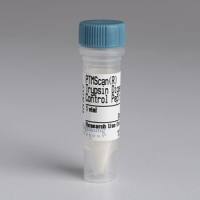Detection of Conformational Changes in Cellular Retinoid-Binding Proteins by Limited Proteolysis
互联网
323
Partial proteolysis of an undenatured protein is a wtdely used, powerful technique to probe protein conformation in the native state. The basts for thts technique is that the more exposed an amino-acid residue is to the solvent, the easier it 1s for a protease to cleave a peptide bond at that site (1 , 2 ). Therefore, regions of a protein with an extended conformation, such as those found in large multidomain proteins, are better substrates for proteolysis than are more tightly folded motifs. Using thus technique, it is possible to define protein domains, because the flexible regions between them are more susceptible to proteolysis. It is possible to further define these domains by obtaining N-terminal amino acid sequence of the resulting fragments. Likewise, by monitoring altered susceptibility to proteolysis, changes in protein conformation may be detected. If partial sequence of the resulting proteolytic fragments is obtained, the regions of the protein involved in these conformational changes can be mapped.








